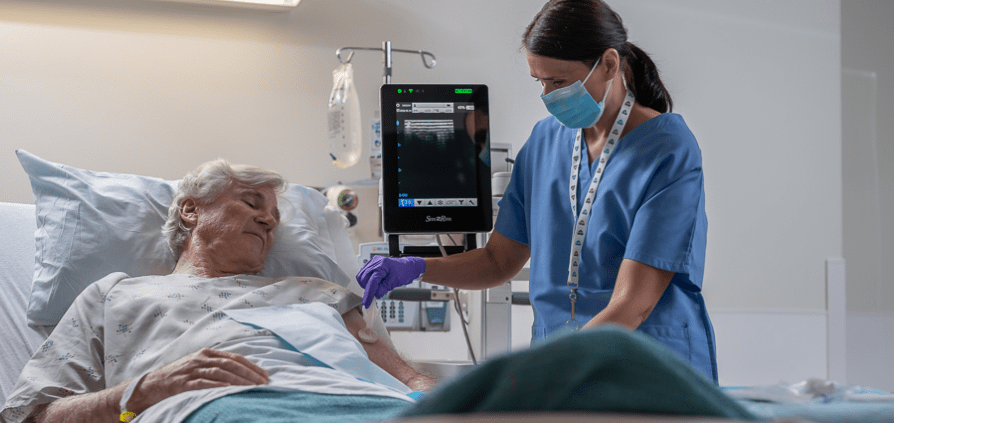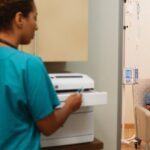Scientific evidence on VATs: Is there enough? Is it robust?
There is much scientific evidence available on the efficacy of vascular access teams (VATs) in managing costs, preventing intravenous (IV) complications, increasing patient healthcare professional satisfaction or concluding in favour of VATs according to Dr Rick van Loon. However, he noted that specialised vascular access services are not available as daily routine clinical practise in every European hospital.
Dr van Loon, Nurse Anaesthetist and Clinical Researcher, Catharina Hospital, Eindhoven, The Netherlands, spoke about “Vascular access teams: a perspective on the current state of the art” on the second day of BD MACOV@23, a virtual edition of the Multidisciplinary Advanced Course on Vascular Access (MACOVA).
Perceived lack of scientific evidence may be preventing the development of VATs in Europe
The creation and development of VATs is heterogenous across Europe.1 The United Kingdom/Ireland and Italy count many healthcare facilities with VATs whereas Germany have very few.1
Dr van Loon highlighted how a perceived lack of scientific evidence may be preventing some healthcare facilities in Europe from implementing a VAT. He then presented the scientific evidence available to support the use of VATs and discussed whether this evidence is robust enough.
More on this topic: Spanish vascular access team refines device selection algorithm
Scientific evidence varies in robustness
Randomised controlled trials on VATs
Dr van Loon considers randomised controlled trials (RCTs) to be the highest level of evidence. However, he pointed out that RCTs on vascular access management (VAM) can be time-consuming, costly and present ethical challenges. He wondered if it would be ethical to run an RCT comparing the use of a VAT versus no VAT, knowing that VATs may lead to better outcomes.
Systematic reviews on VATs
Dr van Loon put forth the idea that scientific studies with a lower level of evidence could be put together in a systematic review to provide a higher level of evidence. The results of systematic reviews may be used in clinical practice or research projects.
Nevertheless, in a survey of healthcare professionals in six different European countries, interviewees reported a lack of conclusive evidence on VATs.2 They added that managing and reporting data are problematic.2 Best practice is not standardised across all stakeholders.2 How can these challenges be overcome?
More on this topic: Make the case for a vascular access team by convincing with facts
Become a VAMbassador to get access to the full article
References
- Cortés Rey N, Pinelli F, van Loon FHJ, et al. The state of vascular access teams: Results of a European survey. Int J Clin Pract. 2021;75(12):e14849. doi:10.1111/ijcp.14849
- Mussa B, Pinelli F, Cortés Rey N, et al. Qualitative interviews and supporting evidence to identify the positive impacts of multidisciplinary vascular access teams. Hosp Pract. 2021;49(3):141-150. doi:10.1080/21548331.2021.1909897
- Morrow S, DeBoer E, Potter C, Gala S, Alsbrooks K. Vascular access teams: a global outlook on challenges, benefits, opportunities, and future perspectives. J Assoc Vasc Access. 2021;27(1):1-11. doi:10.2309/JAVA-D-21-00020
This list of references to third-party peer-reviewed material and the sites they are hosted on are provided for your reference and convenience only, and do not imply any review or endorsement of the material or any association with their operators. The Third-Party References (and the Web sites to which they link) may contain information that is inaccurate, incomplete, or outdated. Your access and use of the Third Party Sites (and any Web sites to which they link) is solely at your own risk.
This presentation was developed by the presenter, and the findings, interpretations, and conclusions contained or expressed with it do not necessarily reflect the views of BD. To the extent this presentation relates to specific products, such products should always be used in accordance with the relevant instructions for use and other product documentation. This content should not be copied or distributed without the consent of the copyright holder. For further information, please contact: GMB-EU-MDS@bd.com
BD-113208




